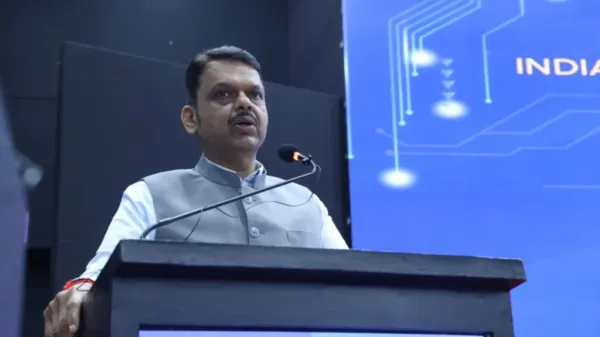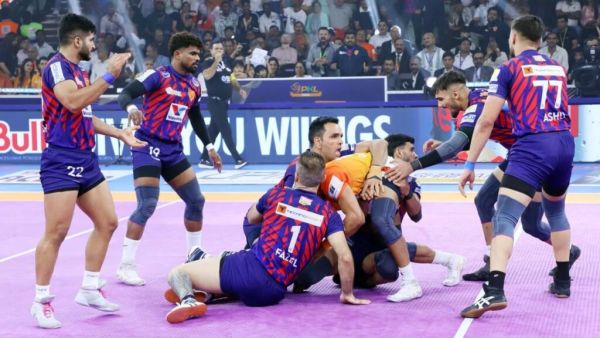India’s push toward becoming a developed nation by 2047 is seeing a shift in how philanthropy works. Family-led giving and next-generation donors are moving towards long-term and structured social impact instead of one-time charity. Sector leaders say this change, supported by the “Three E’s” framework — Ease of Learning, Ease of Giving, and Ease of Collaborating — is strengthening strategic philanthropy in the country.
What is changing in India’s philanthropy model
Philanthropy in India is entering a new phase as families and younger donors support projects designed for long-term impact. Unlike earlier giving that was often individual and reactive, next-gen philanthropists are choosing issues like mental health, disability inclusion, climate action, gender equity, and innovation.
This shift is seen as aligned with India's vision of inclusive and resilient growth. Experts note that family philanthropy offers flexibility and deeper engagement with communities, compared to corporate social responsibility (CSR) that operates within compliance frameworks and annual planning cycles.
Why next-gen donors matter
Young philanthropists are increasingly informed, globally aware, and willing to take risks. Their approach includes data-driven decisions, focus on root-cause solutions, and patience for long-term results. This mindset supports social transformation aligned with national goals for Viksit Bharat 2047.
The role of the “Three E’s” framework
Neera Nundy, Co-Founder and Partner, Dasra, said, “Ease of Learning equips donors with curated insights, peer learning, and sector intelligence so they stay ahead of emerging issues. Ease of Giving provides trusted platforms, cross-border vehicles, and family office support that simplify action. Ease of Collaborating unlocks collective power helping families co-invest, build pooled funds, and take bold bets together.”
“This framework transforms giving from isolated acts into coordinated efforts that are professional, data-driven, and outcomes-focused. It encourages philanthropists to share resources, ideas, and networks leading to deeper impact and reduced duplication. In essence, the Three E’s are not just a framework, they are the infrastructure of India’s future philanthropy movement,” she added.
Long-term role in national development
Philanthropy leaders believe strategic giving will play a long-term role in shaping national development priorities. They say India's development journey will be strengthened when families and young donors work together and invest in social challenges with scale and vision.
Geetika Dadlani, head of program at Giving Pi, said, “As India strives toward Viksit Bharat 2047, family and next-gen philanthropists will be central to shaping the country’s social and economic future. Their courage to innovate, collaborate, and stay invested for the long term allows them to influence national priorities in ways traditional models cannot.”
“By adopting the Three E’s, philanthropy becomes easier, smarter, and more impactful shifting from charity to strategic nation-building. If India can harness the full potential of its philanthropic families and empower the next generation to lead with purpose, then philanthropy will not just support India’s development it will accelerate it. The road to Viksit Bharat 2047 will be paved not only with policy and progress, but with bold, collaborative, and visionary giving,” she added.
What is changing in India’s philanthropy model
Philanthropy in India is entering a new phase as families and younger donors support projects designed for long-term impact. Unlike earlier giving that was often individual and reactive, next-gen philanthropists are choosing issues like mental health, disability inclusion, climate action, gender equity, and innovation.
This shift is seen as aligned with India's vision of inclusive and resilient growth. Experts note that family philanthropy offers flexibility and deeper engagement with communities, compared to corporate social responsibility (CSR) that operates within compliance frameworks and annual planning cycles.
Why next-gen donors matter
Young philanthropists are increasingly informed, globally aware, and willing to take risks. Their approach includes data-driven decisions, focus on root-cause solutions, and patience for long-term results. This mindset supports social transformation aligned with national goals for Viksit Bharat 2047.
The role of the “Three E’s” framework
Neera Nundy, Co-Founder and Partner, Dasra, said, “Ease of Learning equips donors with curated insights, peer learning, and sector intelligence so they stay ahead of emerging issues. Ease of Giving provides trusted platforms, cross-border vehicles, and family office support that simplify action. Ease of Collaborating unlocks collective power helping families co-invest, build pooled funds, and take bold bets together.”
“This framework transforms giving from isolated acts into coordinated efforts that are professional, data-driven, and outcomes-focused. It encourages philanthropists to share resources, ideas, and networks leading to deeper impact and reduced duplication. In essence, the Three E’s are not just a framework, they are the infrastructure of India’s future philanthropy movement,” she added.
Long-term role in national development
Philanthropy leaders believe strategic giving will play a long-term role in shaping national development priorities. They say India's development journey will be strengthened when families and young donors work together and invest in social challenges with scale and vision.
Geetika Dadlani, head of program at Giving Pi, said, “As India strives toward Viksit Bharat 2047, family and next-gen philanthropists will be central to shaping the country’s social and economic future. Their courage to innovate, collaborate, and stay invested for the long term allows them to influence national priorities in ways traditional models cannot.”
“By adopting the Three E’s, philanthropy becomes easier, smarter, and more impactful shifting from charity to strategic nation-building. If India can harness the full potential of its philanthropic families and empower the next generation to lead with purpose, then philanthropy will not just support India’s development it will accelerate it. The road to Viksit Bharat 2047 will be paved not only with policy and progress, but with bold, collaborative, and visionary giving,” she added.





